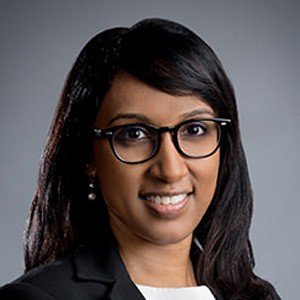Fair Isaac Corporation v. LAC Co., Ltd [2022] SGIPOS 19
31 March 2023
![Fair Isaac Corporation v. LAC Co., Ltd [2022] SGIPOS 19](https://asiaiplaw.com/storage/media/image/article/3a2a9aef4cbed81244820a091667c0bd/banner/d37b3ca37106b2bfdeaa12647e3bb1c9/conversions/Mirandah-Banner--extra_large.jpg)
What happens when a later trademark incorporates an earlier one, especially when many other trademarks on the register incorporate the earlier trademark? This decision explores the applicable principles surrounding trademark oppositions involving such facts.
The applicant, a major international cybersecurity corporation, sought to register the application mark .
The opponent, whose goods and services included fraud detection, relied on its earlier registrations for the opponent’s mark in these proceedings.
The opponent argued that the application mark was so similar to the opponent’s earlier mark as to engender a likelihood of confusion on the part of the public, and that the applicant is liable in the tort of passing off.
The Registrar observed that when a later trademark incorporates an earlier one, the similarity between the marks depends on the earlier mark’s inherent technical distinctiveness. If the earlier mark has a low level of inherent technical distinctiveness, i.e. it is merely descriptive rather than inventive, the average consumer would focus on the variations between the marks, and so perceive them to be different.
The Registrar rejected the applicant’s argument that, notwithstanding the common word “Falcon”, the marks were dissimilar because the competing marks co-exist in other countries. He took the view that the opponent’s mark possessed a low level of inherent distinctiveness because falcons are eagle-eyed, quick and smart – all appropriate descriptions of fraud detection goods and services. As such, merchants would legitimately want to use the word “Falcon” as part of their trademarks, and there ought not to be a monopoly over that word.
The Registrar nonetheless found that the marks were indeed different, both visually and aurally. In the mind of the average consumer, “Cloud” was a distinguishing visual feature in the application mark. Furthermore, the additional syllable “Cloud” in the application mark distinguishes it aurally from the opponent’s mark. Despite the marks being applied in overlapping spheres of business, the Registrar therefore held that the average consumer would not likely confuse the marks.
The Registrar also held that the opponent fell short of proving the requisite misrepresentation to establish its case in passing off, because the opponent could not even establish any likelihood of confusion under the marks-similarity test so as to associate the applicant’s goods and services with the opponent.
As both grounds of opposition failed, the application mark was allowed to proceed to registration.








